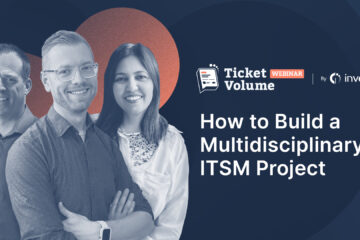AIOps, or Artificial Intelligence for IT Operations, is becoming an integral part of IT processes. Leveraging artificial intelligence for ITOps brings numerous benefits that can greatly enhance efficiency, reliability, and performance.
Let’s delve into the potential of AIOps software, from automating tasks to predicting issues and improving decision-making, as well as practical implementation strategies.
Read on to learn more.
Table of contents
What is AIOps?
AIOps is a sophisticated platform that utilizes machine learning (ML) and analytics to automate IT operations.
In essence, AIOps collects data from various IT tools and devices using big data, automatically identifying and addressing issues in real time.
This approach provides insights that were previously difficult to obtain, improving the efficiency, performance, and reliability of IT processes.
AIOps vs. DevOps
While both AIOps and DevOps aim to enhance IT operations, they have different focuses and methodologies.
DevOps emphasizes collaboration between development and operations teams to deliver applications and services rapidly. AIOps, on the other hand, aims to automate and improve IT operations using artificial intelligence and machine learning.
Their operational methods differ as well. DevOps relies on automation tools for software development processes, while AIOps utilizes big data analytics and AI to predict and prevent issues before they occur.
Their outcomes also vary, with DevOps reducing development time and improving software quality, while AIOps aims to automate IT operations and prevent downtime or performance issues.
During implementation, DevOps practices are integrated into the software development lifecycle, while AIOps focuses on automating and optimizing operational tasks in IT operations.
Why is AIOps important?
AIOps is essential for boosting an organization’s IT infrastructure performance.
Its ability to save time and reduce human error makes it invaluable.
By automatically detecting and resolving issues in real time, AIOps minimizes downtime and the need for manual intervention. Additionally, its predictive capabilities enable proactive problem resolution.
AIOps enhances performance monitoring by providing a unified view of operations, enabling efficient identification and rectification of inefficiencies. Its data-driven nature allows for better resource allocation and trend forecasting.
Companies should prioritize AIOps to gain a competitive edge, reduce IT resource requirements, and mitigate potential losses from downtime. AIOps simplifies IT operations amid complexity and supports scalability and technology adaptation.
The ultimate goal is to free up IT teams for strategic initiatives rather than firefighting.
10 benefits of using artificial intelligence for IT Operations
Integrating AI into ITOps provides numerous advantages that enhance operational efficiency, reliability, and performance.
Here are the main benefits of using AI for IT Operations.
1. Enhanced operational efficiency
AI automates routine tasks, reducing IT staff workload and allowing focus on strategic initiatives to improve IT infrastructure.
2. Predictive analytics
AI’s predictive capabilities allow proactive measures to prevent downtime or issues before they affect services.
3. Faster incident resolution
AI quickly analyzes incidents, identifies root causes, and suggests or automates corrective actions.
4. Improved decision-making
IT leaders can optimize resource allocation, capacity planning, and strategic investments with AI’s data analysis.
5. Enhanced user experience
AI-driven ITOps ensures smooth IT services, enhancing customer and employee experience.
6. Cost reduction
Automating IT operations with AI leads to significant cost savings by reducing manual intervention.
7. Scalability
AI scales easily to meet the growing complexity and volume of IT operations.
AI systems automatically adjust resource allocation based on demand, ensuring efficient and reliable performance without compromising scalability.
Security enhancement is another benefit of AI, as it can quickly detect and respond to potential cyber attacks, minimizing damage.
AI systems foster continuous improvement by learning from incidents and adapting to new challenges, improving accuracy and efficiency over time.
Cross-domain insights enable AI to analyze data from different sources within an IT environment, allowing for better coordination and optimization of resources across the organization.
In terms of implementation, developing an AIOps plan involves engaging stakeholders, selecting the right tools, developing necessary skills, and implementing changes in phases to ensure a smooth transition.
Examples of AIOps in practice include fraud detection in financial services, real-time analysis of network traffic patterns, predictive maintenance in manufacturing, personalized recommendations in e-commerce, and dynamic resource allocation in cloud computing. By implementing automation, suspicious activity can be immediately flagged and blocked for further verification. In the retail supply chain, IAOps predictive capabilities can optimize distribution strategies by recommending adjustments to orders when low inventory is detected. For equipment maintenance at manufacturing plants, AIOps can prevent unexpected breakdowns and costly downtime by scheduling maintenance automatically and analyzing data from equipment sensors to predict failures. In telecommunication companies, AIOps can monitor network performance, identify potential issues, and predict outages to initiate automated responses. In the healthcare system, AIOps can aggregate and analyze data from monitoring devices to predict potential health issues and alert medical staff for prompt intervention. The versatility of AIOps across different industries showcases its potential to drive significant improvements in business operations. sentence in active voice:
“The project was completed by the team last week.”
The team completed the project last week.


